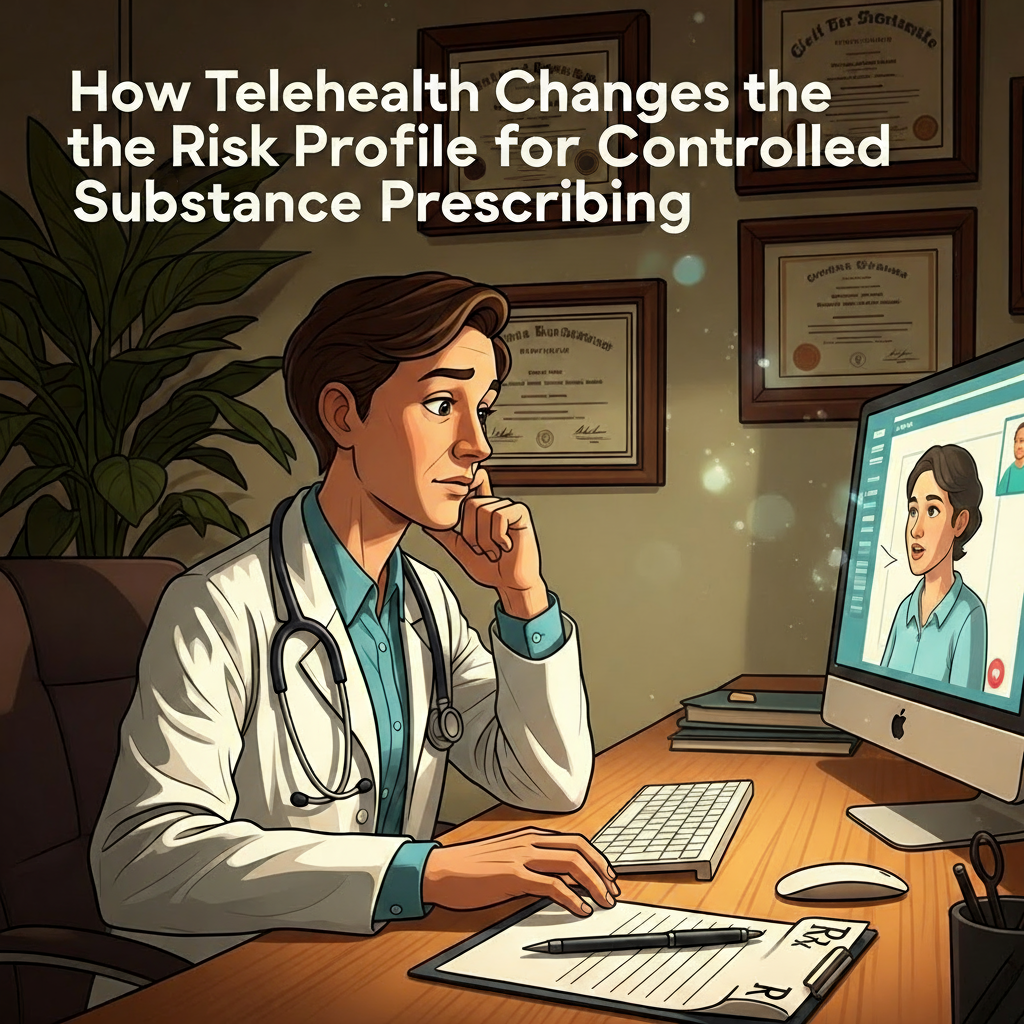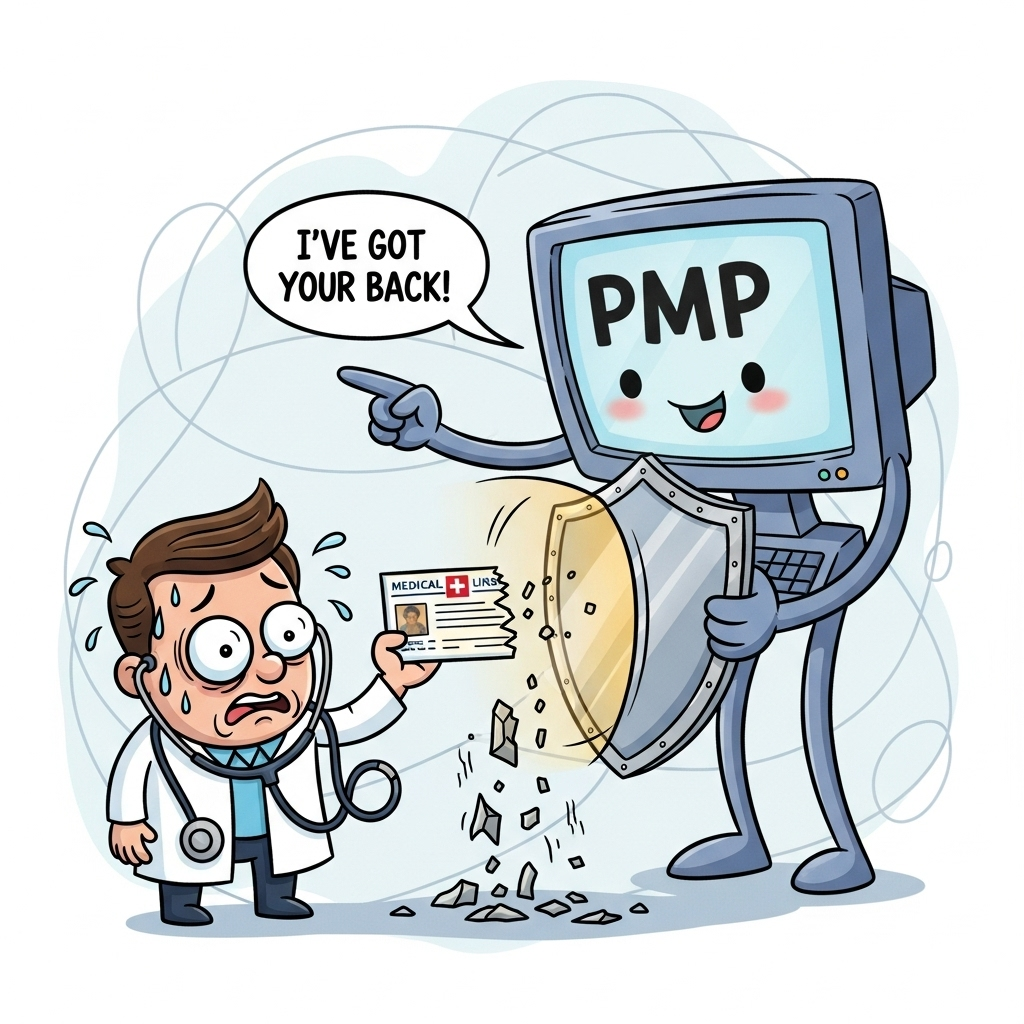
How Telehealth Changes the Risk Profile for Controlled Substance Prescribing
Doug Jorgensen
March 27, 2025
Introduction: New Convenience, New Challenges
Telehealth has transformed how healthcare is delivered, making it easier for patients to access care—especially for behavioral health, pain management, and follow-up visits.
But when it comes to controlled substance prescribing, telehealth changes the risk landscape in ways providers can’t afford to ignore.
The convenience of virtual care must be matched with equally strong safeguards to ensure safety, compliance, and regulatory alignment.
How Telehealth Increases Certain Risks
- Patient Verification Challenges
Without in-person interaction, it’s harder to verify identity and confirm that the patient—not someone else—is receiving the prescription. - Reduced Physical Assessment
Limited ability to observe physical signs of misuse, side effects, or comorbidities. - Potential for “Doctor Shopping” Across States
Telehealth makes it easier for patients to seek multiple prescribers without geographic limits. - Regulatory Complexity
State and federal rules for controlled substances via telehealth are evolving, creating uncertainty.
Current Regulatory Environment
- Ryan Haight Act – Generally requires at least one in-person medical evaluation before prescribing controlled substances, with certain exceptions.
- COVID-19 Public Health Emergency Flexibilities – Temporarily relaxed rules allowed initial prescribing via telehealth; some of these flexibilities are extended, others are being phased out.
- State-Specific Requirements – Each state may have additional rules for telehealth prescribing, PMP checks, and patient monitoring.
Risk Mitigation Strategies for Telehealth Prescribing
1. Maintain an In-Person Anchor
- Whenever possible, establish an initial in-person visit before prescribing high-risk medications.
- Use in-person follow-ups for higher-risk patients.
2. Strengthen Patient Verification
- Use secure telehealth platforms with identity verification features.
- Confirm date of birth, address, and government-issued ID on camera.
3. Keep PMP Checks Non-Negotiable
- Run a Prescription Monitoring Program query before each controlled substance prescription—especially important in multi-state practices.
4. Integrate UDT and Pill Counts
- Partner with local labs or pharmacies to facilitate urine drug testing.
- Require patients to bring medications to video visits for on-camera pill counts. These are not a substitute for the patient’s local pharmacy counting pills.
5. Increase Visit Frequency for High-Risk Patients
- Shorter refill intervals and more frequent follow-ups help maintain oversight.
Communication With Patients
Explain upfront that:
- Telehealth prescribing for controlled substances carries the same monitoring requirements as in-person care.
- Risk mitigation protects access to treatment by demonstrating responsible prescribing.
- Compliance expectations will not be relaxed simply because care is delivered virtually.
Benefits of a Well-Designed Telehealth Protocol
When done right, telehealth can:
- Maintain access for rural or mobility-limited patients.
- Reduce no-show rates and improve continuity of care.
- Support timely intervention when risk factors emerge.
Final Thoughts: The Rules Haven’t Changed—Just the Medium
Telehealth is simply another venue for practicing medicine.
The same clinical, ethical, and regulatory responsibilities apply—sometimes more stringently—when prescribing controlled substances remotely.
If you wouldn’t do it in person, you shouldn’t do it over a screen.
About the Author
Douglas J. Jorgensen, DO, CPC, FAAO, FACOFP
Dr. Doug is a physician, consultant, and national educator on healthcare compliance, telehealth prescribing, and risk mitigation. He helps practices design virtual care protocols that meet patient needs while satisfying regulatory demands.


